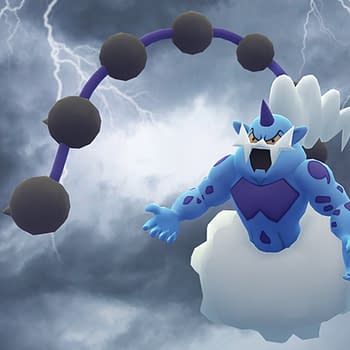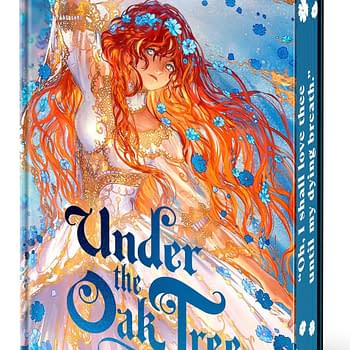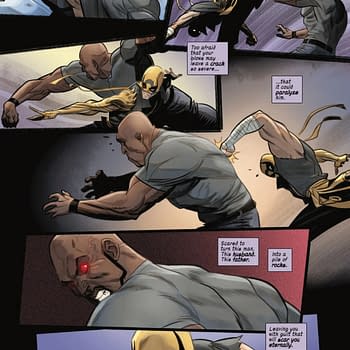Posted in: Comics, Indie Comics, Review, Vault | Tagged: engineward, indie comic review, joe eisma, vault, vault comics
Engineward #1 Review: Vault Builds a Future Where Earth Is Forgotten
Vault Comics, known for its focus on sci-fi and some of the best-designed covers in comics, released the first issue of Engineward this week. The series, which received an ambitious twelve-issue order from the indie publisher, is written by George Mann. He is known for, among other speculative fiction, as a prolific Doctor Who writer. Joe Eisma joins Mann in a significant stylistic departure from his work at Archie Comics and his creator-owned Morning Glories. The team is rounded out by colorist Michael Garland and letterer Hassan Otsmane-Elhaou who offers something incredibly unique to Engineward. We'll get to that in time. First… is it any good?
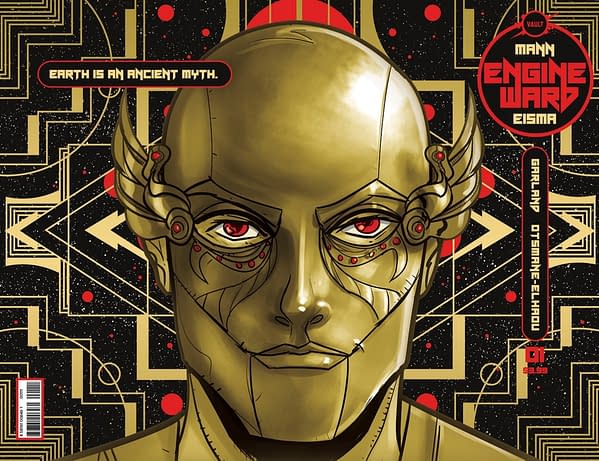
Here's what you need to know going in, summed up by Engineward #1's solicitation:
Earth is an ancient myth, long forgotten. Now, the word of the god-like Celestials is absolute, and they rule with brutal efficiency. When Joss, an Engineward, discovers and reactivates the head of an ancient ghoulem, she finds all is not as intended. Her destiny-and that of her world-lies somewhere far beyond the borders of her shantytown.
It's a high concept indeed, and the success of that often hinges on the characters. Joss, the lead, is the brightest light in the series, offering a lead who's personality shines bright in what is a somewhat dismal situation. There's a shortage of water in her area, as it is being hoarded by the aforementioned Celestials, who are also feeling the effects of the drought. Armuth, the masked Celestial who gets the most page time of all these beings, comments: "I don't even fill my second bathhouse anymore." It remains to be seen if all of the Celestials are this arch in their villainy, but from the way Gemini, who appears half-human, half cyborg speaks of the villagers… it's not looking likely.
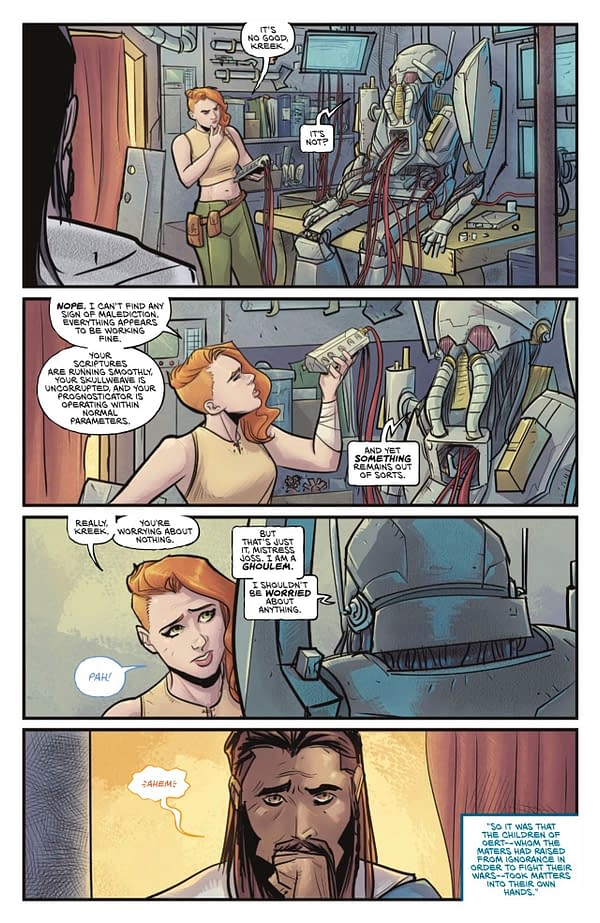
The rest of the story, which culminates in Joss and Ichabod activating the fossil that the latter had excavated, focuses mostly on world-building. It's an interesting world, and it's fun to watch it develop, but a bit more time developing the characters may have created a more compelling balance. The dialogue strains slightly under the weight of this world-building, as characters explain mythology to the reader before we know who they are with lines such as these:
"Cappin Nypan. For a moment there, I thought you were a ruddy shade."
"I am many things, Joss, but a mythical specter is not one of them."
And there are also sequences where the colloquialisms, rolling out essentially one after the other, seem slightly overdone:
"Celestials be with me!"
"What in the spheres do you think I'm doing?"
"Thank the claws of cancer."
Engineward seems excited about its mythology, and its focus on the world-building doesn't necessarily take away from the narrative. The series will go on for twelve issues, so we have plenty of time to get to know Joss and her mechanic companion Kreek, and I believe readers will find themselves wanting to spend more time with this interesting duo by the end of the issue.
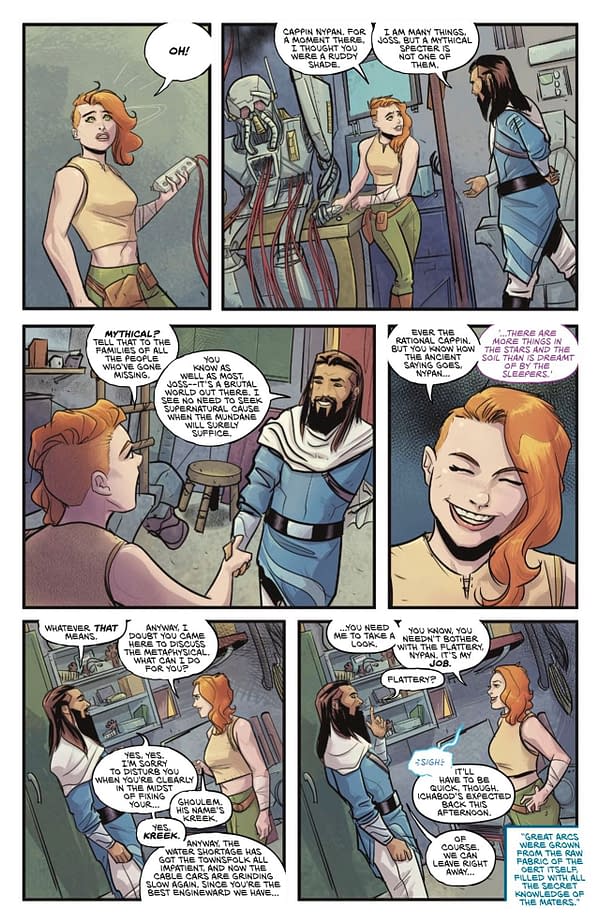
The artwork is a stunning departure for Joe Eisma, who has perfected the teen drama in his previous works. Now, he creates a beautifully realized sci-fi world with unique creatures, intriguing characters, and locations that feel alive. He particularly shines in his creation of the elite Celestials, who feel part God, part Marvel's Illuminati, and part Buffy villain. Michael Garland's color makes the entire book feel hot and sandy, evoking the feeling of the drought while still creating diversely rendered scenes.
Along with Eisma, the star of the book is letterer Hassan Otsmane-Elhaou. Reading Engineward reminds me of the first time I read Chew and witnessed the way that Jonathan Layman experimented with letters, making coldly delivered dialogue literally drip with icicles. Here, Otsmane-Elhaou has created color-coded dialogue cues that tell the reader, without overdoing it, how the lines are delivered. Blue dialogue represents sighs and exhales, with orange meaning a guttural sound (so far, throat clearing), purple for when a character quotes someone else, and red for yelling. It's elegant in its simplicity, using the visual form to experiment without overdoing it. It feels a bit odd that one of the most exciting cliffhangers is wondering what the letterer will surprise us with next in an already good book, but Otsmane-Elhaou is just that good.
Engineward #1 is out from Vault Comics now.






